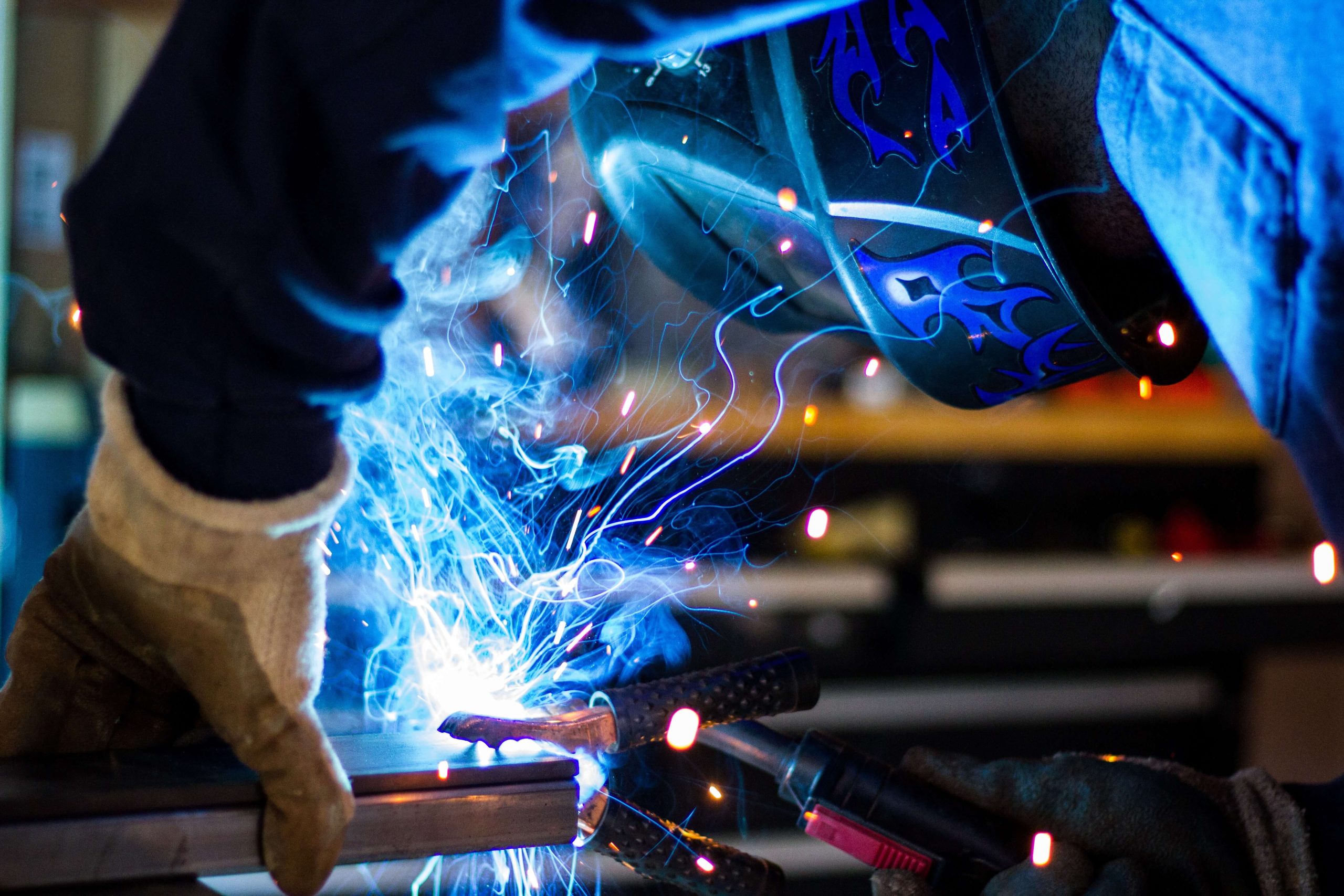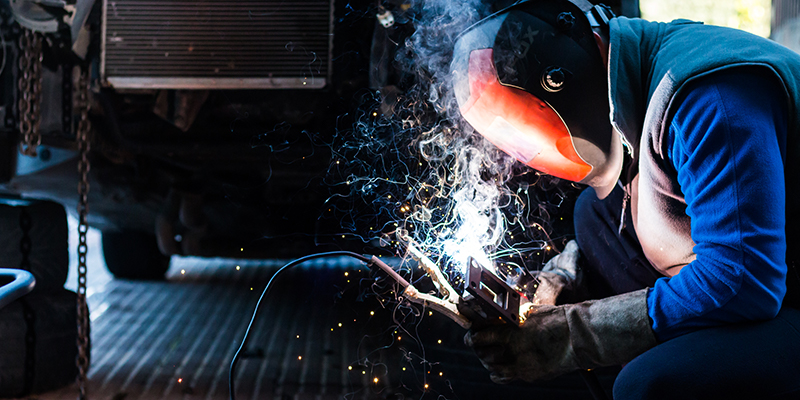Common Welding Repair Issues and Just How to Address Them Successfully
Welding repair work typically run into a variety of problems that can threaten the integrity of the end product. Usual problems consist of inadequate penetration, porosity, and imbalance, to name a few. Each problem provides distinct difficulties that require specific methods for resolution. Comprehending these issues is necessary for welders intending to boost their outcomes and abilities. This discussion will explore these common welding repair work problems and effective methods to resolve them.
Poor Infiltration
Insufficient infiltration occurs when the weld steel falls short to fully fuse with the base product, leading to weak joints and prospective structural failings. This concern frequently originates from insufficient warm input, incorrect electrode angle, or incorrect welding rate. Welders might experience poor infiltration as a result of a mistake of the necessary criteria for a details material density or kind. Furthermore, contamination on the base product's surface can impede efficient bonding, worsening the problem. To deal with poor penetration, welders ought to ensure suitable settings on their devices and preserve a clean work surface. Regular assessment of welds is recommended to determine any type of shortages early, enabling for prompt adjustments and the prevention of compromised structural stability in welded assemblies.
Porosity
Porosity is a typical defect in bonded joints that materializes as small gas bubbles entraped within the weld steel. This defect can compromise the stability of the weld, bring about reduced stamina and prospective failure under tension. Belgrade. Porosity normally emerges from contamination, wetness, or incorrect welding strategies, which allow gases to leave into the molten weld pool. To attend to porosity, welders ought to guarantee appropriate surface area prep work, maintain a clean workplace, and utilize ideal welding parameters. Additionally, picking the best filler product and protecting gas can minimize gas entrapment. Normal inspection and screening of welds can help recognize porosity early, assuring timely corrective activities are taken, thus maintaining the top quality and integrity of the bonded structure
Misalignment
Misalignment in welding can occur from different factors, consisting of inappropriate arrangement and thermal growth. Recognizing the origin is important for efficient resolution. Several improvement strategies are readily available to realign parts and guarantee architectural stability.
Reasons for Misalignment
Welding misalignment frequently comes from a selection of underlying issues that can endanger architectural stability. One main cause is improper fit-up of components before welding, which can lead to voids and uneven surface areas. Variants in thermal growth throughout the welding procedure can additionally result in distortion, especially if the products being signed up with have various coefficients of development. Additionally, inadequate fixturing and clamping may fail to hold elements firmly in area, bring about motion throughout welding. Inadequately conserved equipment, consisting of welding makers and tools, might introduce disparities in the weld grain, additional adding to imbalance. Lastly, driver mistake, coming from not enough training or experience, can also play a considerable function in producing misaligned welds.
Improvement Strategies Readily Available
Addressing misalignment properly calls for a combination of rehabilitative strategies customized to the details concerns at hand. One common approach is making use of jigs or components to hold components in the right placement throughout welding, guaranteeing constant positioning. Additionally, pre-heating the products can help in reducing distortion and boost fit-up. For significant misalignment, mechanical realignment methods, such as making use of hydraulic jacks or clamps, can be employed to deal with the setting before welding. Post-weld heat therapy might likewise be required to relieve stress and anxieties created by imbalance. Finally, cautious examination and modification during the configuration stage can stop misalignment issues from becoming substantial issues, promoting a smoother welding procedure and enhancing general structural honesty.
Distortion
Distortion is an usual challenge in welding that can occur from numerous elements, consisting of irregular heating and cooling. Comprehending the sources of distortion is important for applying effective prevention techniques. Resolving this issue not only boosts structural honesty yet also enhances the overall top quality of the weld.
Reasons of Distortion
When subjected to the intense warm of welding, materials frequently go through modifications that can lead to distortion. This sensation largely develops from thermal development and contraction during the welding procedure. As the weld location warms up, the product broadens; upon air conditioning, it acquires, which can produce inner tensions. Additionally, uneven heating throughout a workpiece can exacerbate these stress and anxieties, causing bending or bending. The kind of product additionally plays a substantial role; steels with differing thermal conductivity and coefficients of growth might react in a different way, resulting in unpredictable distortions. Furthermore, poor joint design and poor fixturing can add to misalignment throughout welding, enhancing the probability of distortion. Recognizing these causes is crucial for efficient welding fixing and avoidance approaches.
Avoidance Techniques
Efficient prevention techniques for distortion throughout welding concentrate on controlling warmth input and guaranteeing appropriate joint style. Maintaining a constant warmth input helps to decrease thermal expansion and tightening, which can cause distortion. Utilizing methods such as preheating the workpiece can also minimize the temperature level gradient, advertising uniform home heating. In addition, picking ideal joint layouts, site link such as T-joints or lap joints, can boost stability and decrease tension concentrations. Executing correct fixturing to protect the workpieces in place better aids in maintaining positioning during the welding procedure. Staggered welding sequences can disperse heat more equally, stopping local distortion. By applying these methods, welders can greatly decrease the likelihood of distortion and improve the general top quality of their welds.
Fracturing
Cracking is an usual issue encountered in welding repairs, typically resulting from numerous aspects such as improper cooling prices, product choice, or poor joint prep work. The occurrence of cracks can significantly compromise the integrity of the weld, bring about potential failures during operation. To resolve this problem, welders have to first evaluate the root creates, guaranteeing that products are compatible and appropriately selected for the details application. Furthermore, regulating the cooling rate throughout the welding procedure is crucial; rapid cooling can cause anxiety and result in fracturing. Appropriate joint layout and prep work additionally add to lessening the danger. Implementing these methods can enhance weld top quality and longevity, eventually minimizing the probability of fracturing in finished weldments.

Insufficient Blend
A considerable concern in welding fixings is insufficient fusion, which takes place when the weld steel does not properly bond with the base material or previous weld passes - This Site Belgrade Welding. This flaw can bring about weaknesses in the joint, possibly endangering the stability of the bonded framework. Aspects contributing to incomplete blend include insufficient warmth input, incorrect welding technique, and contamination of the surfaces being joined. To resolve this issue properly, welders should guarantee appropriate pre-weld cleaning and surface prep work, in addition to change their welding parameters to achieve adequate penetration and combination. Normal assessment during the welding process can also aid recognize incomplete combination early, enabling timely rehabilitative measures to enhance the total high quality of the weld
Overheating
While welding repair services can enhance architectural integrity, overheating provides a significant obstacle that can lead to product deterioration. Excessive warm throughout welding can alter the mechanical residential properties of metals, causing decreased strength, raised brittleness, and warping. This phenomenon is especially essential in high-stress applications where structural integrity is vital. Recognizing overheating can entail visual examinations for staining or distortion, in addition to checking temperature level during the welding process. To alleviate the dangers connected with overheating, welders must employ appropriate techniques, such as managing warm input, changing traveling rate, and utilizing appropriate filler materials. In addition, applying pre- and post-weld warm therapies can assist recover material properties and enhance the total top quality of the repair work, guaranteeing long-lasting efficiency and security.
Often Asked Inquiries
What Are the Typical Signs of a Welding Problem?

How Can I Evaluate My Welds for Top quality?
To examine welds for quality, one can utilize aesthetic evaluations, ultrasonic testing, and radiographic approaches. Each method guarantees structural integrity, recognizes defects, and verifies adherence to defined standards, eventually boosting the reliability of the bonded joints.
What Security Safety Measures Should I Take While Welding?
When welding, one must focus on safety and security by putting on appropriate individual protective tools, guaranteeing correct air flow, protecting combustible materials away, preserving a clean work area, and recognizing environments to stop injuries and mishaps.
Can I Fix a Weld Without Remodeling the Entire Joint?
Repairing a weld without redoing the entire joint is possible, depending upon the damages (Fabrication). Techniques such as grinding, including filler material, or utilizing a welding process can efficiently resolve particular imperfections while maintaining the surrounding structure
What Devices Are Vital for Effective Welding Fixes?
Vital devices for effective welding fixings include a welding machine, cable brush, grinder, protective equipment, clamps, and filler materials. Each tool plays a crucial function in making certain top quality and security throughout the repair service procedure. Porosity typically emerges from contamination, moisture, or incorrect welding methods, which enable gases to get away right into the liquified weld pool. Poorly conserved equipment, consisting of welding makers and tools, might present disparities in the weld grain, more contributing to misalignment. When subjected to the extreme warmth of welding, materials often go through changes that can lead to distortion. Cracking is an usual concern encountered in welding repairs, frequently resulting from different factors such as improper air conditioning rates, product option, or insufficient joint prep work. A significant problem in welding repairs is insufficient blend, which occurs when the weld steel does not sufficiently bond with the base product or previous weld passes.
Comments on “How misalignment forms and what Belgrade Fabrication handles it”